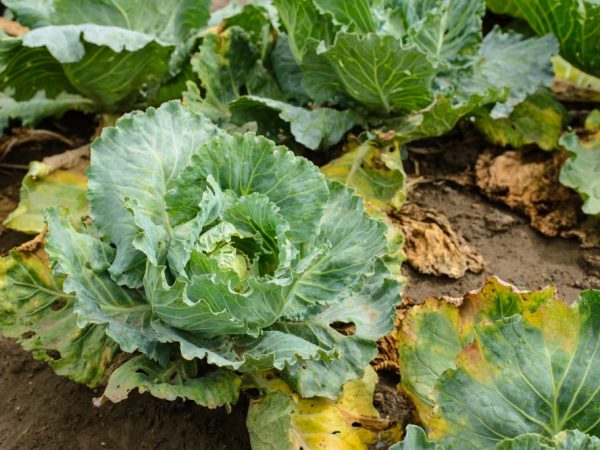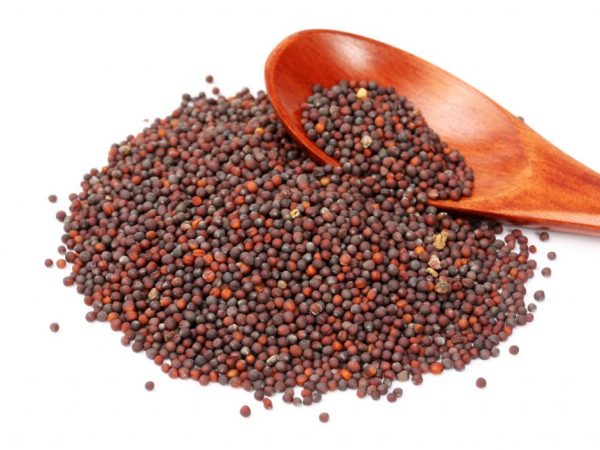How to get rid of cabbage keels
Keela cabbage is a fungal disease affecting cruciferous plants. The risk of injury can be minimized if appropriate measures are taken in a timely manner and if the infected plantings are treated correctly.

Fighting the keel of cabbage
The nature of the disease
Keel disease on cabbage appears under the influence of the active vital activity of the pathogen - a fungus that is in the soil and retains its biological activity for up to 5 years.
The fungal pathogen penetrates the root system of cabbage plantings and blocks the pathways of mineral nutrition and water. The parasite slows down the growth and development of diseased plants. Cabbage leaves gradually begin to wither and turn yellow, heads of cabbage develop slowly or do not form at all.
The spores of the parasitic fungus, which accumulate in the growths on the roots, infect the soil, allowing the spread of the disease.
Symptoms
The main external signs of the disease are white growths that damage almost the entire root system of a vegetable crop. In some cases, the disease manifests itself in the form of thickening. By autumn, these growths acquire a brown color and begin to rot.
At risk are the colored and white cabbage varieties of vegetables, but all cabbage varieties can infect the fungus. Among the most resistant varieties of cabbage to keel are mid- and late-ripening ones.
However, it is not possible to quickly identify signs of an infectious disease, since the growths that appear at the initial stages are small in size and differ little in appearance from ordinary roots, or are mistaken for lumps of earth.
Keela on cabbage can appear at any stage of plant development, but most often it affects young seedlings at the stage of their active growth.
Cabbage seedlings affected by the fungus are easily pulled out of the soil due to the weakness of their root system. With an increase in the number of growths, vegetables become inedible.
Causes of the disease
Among the main reasons for the appearance of the fungus is soil contaminated with fungal spores. Failure to comply with the basic rules of crop rotation and planting cabbage seedlings in the same place for several years in a row lead to the rapid spread of the fungal pathogen, which retains its activity in the ground for a long time.
Other factors that contribute to the development of a fungal infection:
- temperature unsuitable for growing vegetables - 18 ° -25 °;
- moisture indicators exceeding the norm - over 75%;
- excess in the soil of the pH value - acidity more than 5.6 points;
- planting cabbage seedlings in heavy acidic soil will inevitably lead to the appearance of a fungus on the roots of plants.
Preventive measures

Seed treatment can help avoid contamination
Preventive measures will help you avoid infection.
Seed processing
Pre-sowing disinfection of seeds in the fight against keel is one of the main preventive measures. This can be done in one of several available ways:
- treatment of seeds in a means that has an immune-stimulating effect that increases the resistance of a vegetable crop to the external environment;
- thermal disinfection of the seed material by soaking them in hot water at a temperature of about 50 ° for 20-30 minutes;
- keeping the seeds in a mustard solution for 5-6 hours;
- processing of seed material with ascorbic acid at the rate of 0.1 g per 1 liter of water with soaking for 15 hours;
- by hardening the seeds in the refrigerator for 1 day.
Disinfection and soil preparation
Disinfection of soil is an indispensable measure in the fight against keel in cabbage. It is recommended to do this in the fall by applying limestone and organic fertilizers. During the digging of the land after the harvest, all weeds are destroyed.
Compliance with crop rotation
The correct crop rotation helps to fight the keel, which regulates the fertility and acidity of the soil. It is recommended to plant cabbage after:
- nightshades that help cleanse the soil in 3 years, these include eggplants, potatoes, tomatoes, bell peppers,
- liliaceae, among which are garlic, spicy varieties of onions, they destroy a fungal infection in 2-3 years,
- haze that kill the fungal pathogen in 2 years, including beets, spinach and quinoa.
Complex planting of both Solanaceae and Liliaceae at the same time can reduce the treatment of soil from the keel, destroying the pathogen in 1 year.
Agrotechnical preventive measures
Agrotechnical preventive measures reduce the risk of fungal infection. To this end:
- provide the necessary content of calcium, zinc, potassium, boron and chlorine in the soil,
- increase the amount of humus, mullein and compost, rich in microflora and restraining the active vital activity of the fungal pathogen,
- observe proper watering,
- normalize acidity by introducing deoxidizing drugs, for example, by introducing colloidal sulfur,
- high spud cabbage plantings, which gives the active development of additional roots, which take on a compensating role in replenishing the nutrition and needs of plants in water.
When keela is found on most plantings, it is recommended to pay more attention to measures that prevent the spread of fungal infection:
- use disinfected technical equipment to avoid the transfer of fungal spores on the instruments,
- remove infected plants by checking the wells for residues of infected roots.
Folk methods and chemical means
The fungus is resistant to antifungal drugs. You can fight the keel on cabbage with folk and chemical remedies that have proven themselves well. However, the drugs do not cure infected plantings and do not help get rid of the keels on the cabbage, they only restrain the spread of the fungal infection.
Folk remedies
- watering cabbage plantings affected by a fungal infection with a lime solution, which is made from 150 g of lime and 5 liters of water, the consumption rate per plant is 0.5 liters of working fluid,
- feeding cabbage against keels with slurry or a solution with mullein,
- extinguishing the fungus with sulfur at the rate of 45 g per 10 liters of water.
Chemicals
Among the chemicals that can be used prophylactically for soil treatment are antifungal agents for treating the earth:
- glyocladin,
- previcourt,
- trichodermin and others.
Conclusion
It is necessary to fight the keel on the cabbage in a timely manner, but even active measures do not guarantee complete elimination of the problem. Follow preventive measures to avoid complicated and time-consuming treatment.


